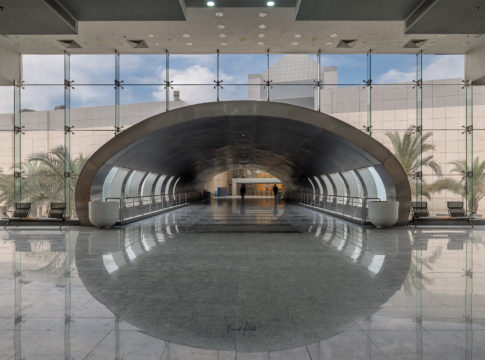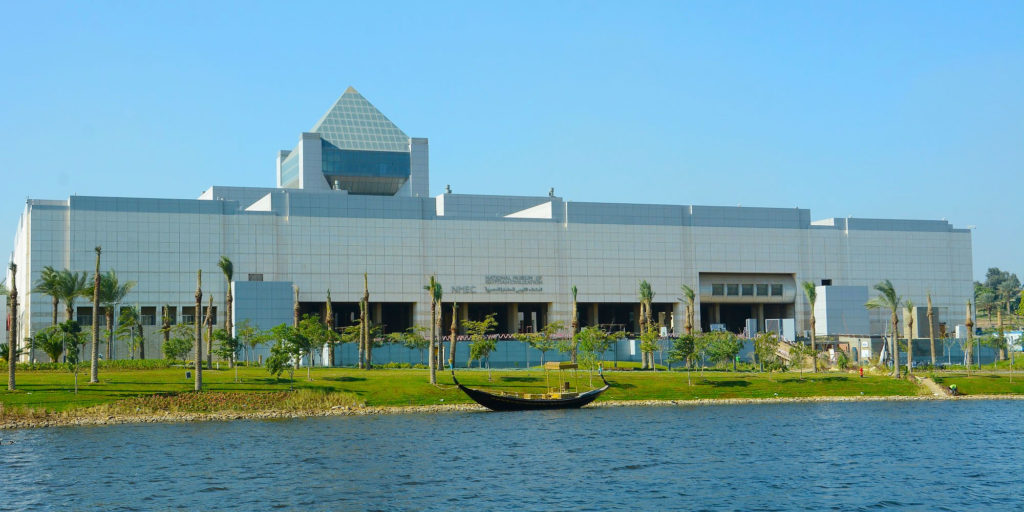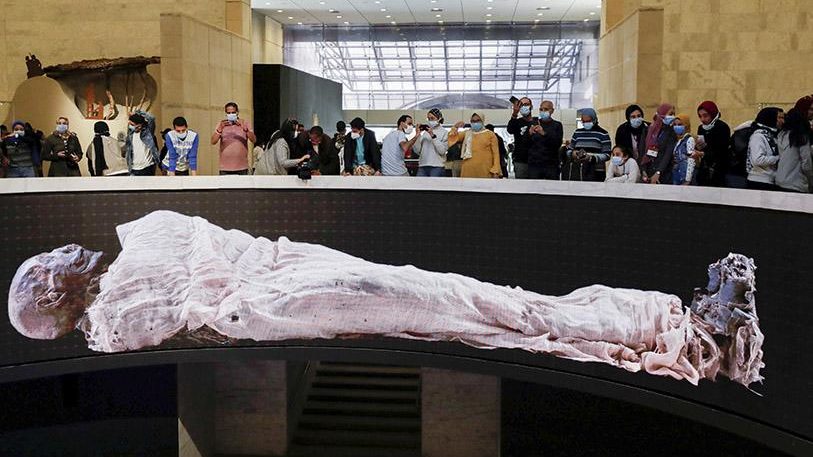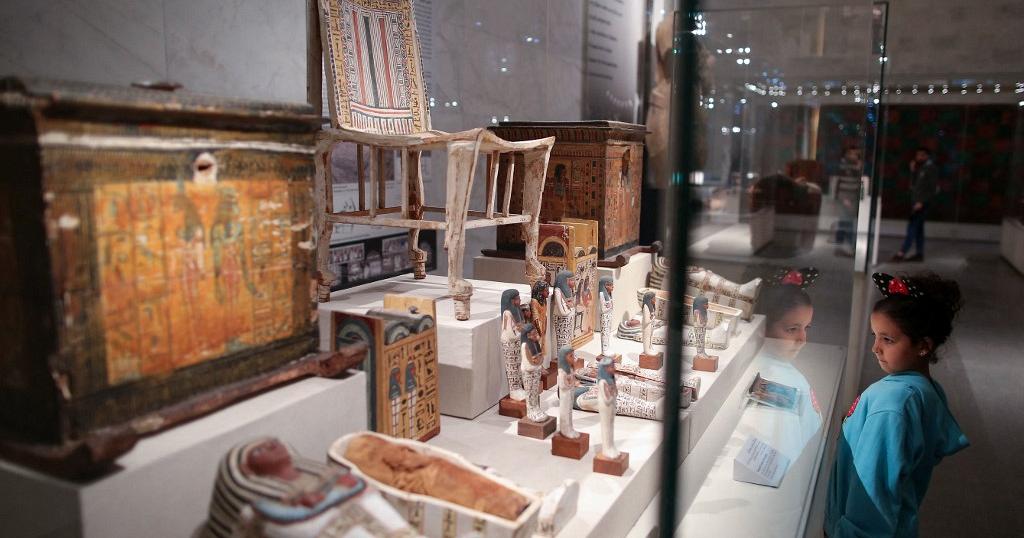The opening of the National Museum of Egyptian Civilization has been a long awaited big national project that has come to end on the 3rd of April with a magical ceremony that has rocked the whole world. With more than 400 international media channels covering the convoy of the 22 royal mummies of Egyptian kings and Queens to their final destination, the exotic ceremony was a real success that kept millions around the world hooked by the remaking of Egyptian history.
Following the 3rd of April memorable ceremony, the National Museum of Egyptian Civilization opened its doors to visitors on the 4th of April. The main hall was opened for visitors from all around the world. As for the second main hall which embraces the royal mummies Dr. Khaled Al- Anani, Minister of Antiquities & Tourism declared that it will be ready to receive visitors starting the 18th of April, as the royal mummies were convoyed in tubes full of nitrogen to be well preserved, and it will take 2 weeks to prepare them for display.
“Having the royal mummies s’ hall closed until 18th of April and the pandemic phobia, did not stop visitors from starting to pour into the museum” , says Mr. Sayed Abu El Fadel , the General Supervisor of the main gallery and the royal mummies gallery.
“The flow of visitors has been quite high since the 4th of April; the number of visitors is actually increasing day after day; the last number I received was May 22nd; we received 2,000 visitors that day.”, says Abu El Fadel.
The moment you step in from the gates of the museum, you will be greeted by a beautiful lake view on your right side; Ain El Sira lake that has been fully renovated after years of neglect and suffering from polluted water.
After entering the museum you will realize that it is a modern piece of art that displays real ancient beauty!.
After getting your ticket (60 LE for Egyptian adults, 30 LE for Egyptian students, 200 LE for Foreigners and 100 LE for Foreign students), a long modern alley will lead you into the two main halls.
Colors play a significant role in the museum design, following stepping down to enter the first hall of the royal mummies the first display you will see is a big rounded screen that has the shape of a circle, its floor displays a documentary movie about the valley of the kings, where the mummies were found, while the walls of the rounded screen displays pictures for the mummies and their belongings that were found in their tombs.
The hall starts with a relatively high dark alley, where the dim light and the dark color of the walls give the impression to the visitor that he is in a real royal tomb!. Side talk and mobile phones are prohibited.
The alley leads you to where the mummies are displayed in their glass boxes; and for the first time next to each mummy some of its belongings are displayed, that where found next to it; for instance King Amenhotep the 2nd who was fond with shooting, his real arrow is displayed next to him, as well some of his belongings that would serve him in his eternal life, as Pharaohs used to believe. Some of the royal mummies are displayed for the first time, as the royal mummy of King Citi the 2nd and King Ramses the 6th and Queen Tiye, with her famous well-preserved hair.
Using high tech in the hall of the royal mummies, is one of the most impressive elements of display. X-rays of some mummies are displayed through high tech screens next to the mummy. The x-rays that were done for some mummies actually, show how they died; for instance king Seqenenre Tao, his X-ray reveals that he was assassinated by some stabs in the neck! But history still remembers his brave battle with the Hyksos. Another displayed X-ray for King Ramses the 3rd, who was a brave Egyptian warrior; who kept the Egyptian borders well secured during his ruling period.
Alleys and stairs of the hall of the royal mummies will lead you to the 2nd main hall of the museum; its left side displays prehistoric remains and significant pharaonic monuments. Inside each glass box that displays the monument there is a small electronic pad that tells a brief about the monument; one of the most interesting briefs is a short educational documentary that explains how Pharaohs manufactured the first prosthesis in history!.
Prehistoric remains are also displayed at the right side of the second main hall; in a very smooth transition the hall takes you in a trip through time; from the prehistoric period, to the pharaonic, followed by the Roman, the Coptic, the Islamic and the Ottoman.
Big Screens that display short documentary movies, about various Egyptian historical eras, are present to aid visitors to know more about the Egyptian history
A very interesting documentary talks about Alexandria lighthouse, one of the Seven Wonders of the World, which was destroyed by three earthquakes between 956 AD and 1323”.
The museum opens its doors to visitors all week long; from 9am to 5pm. Only on Friday, there is a second shift from 6pm to 9 pm. On a special note to Middle East Observer, Mr. Sayed Abu El Fadel clarifies that the National Museum of Egyptian Civilization will be hosting soon more halls that will be opening its doors to visitors in the coming future. As well, the two floor medium sized pyramid that is on top of the museum will host a new hall, with a new theme called Egypt Capitals. The pyramid will have a big panorama with touch screens and a telescope through which you can see the beautiful capital in detail!





